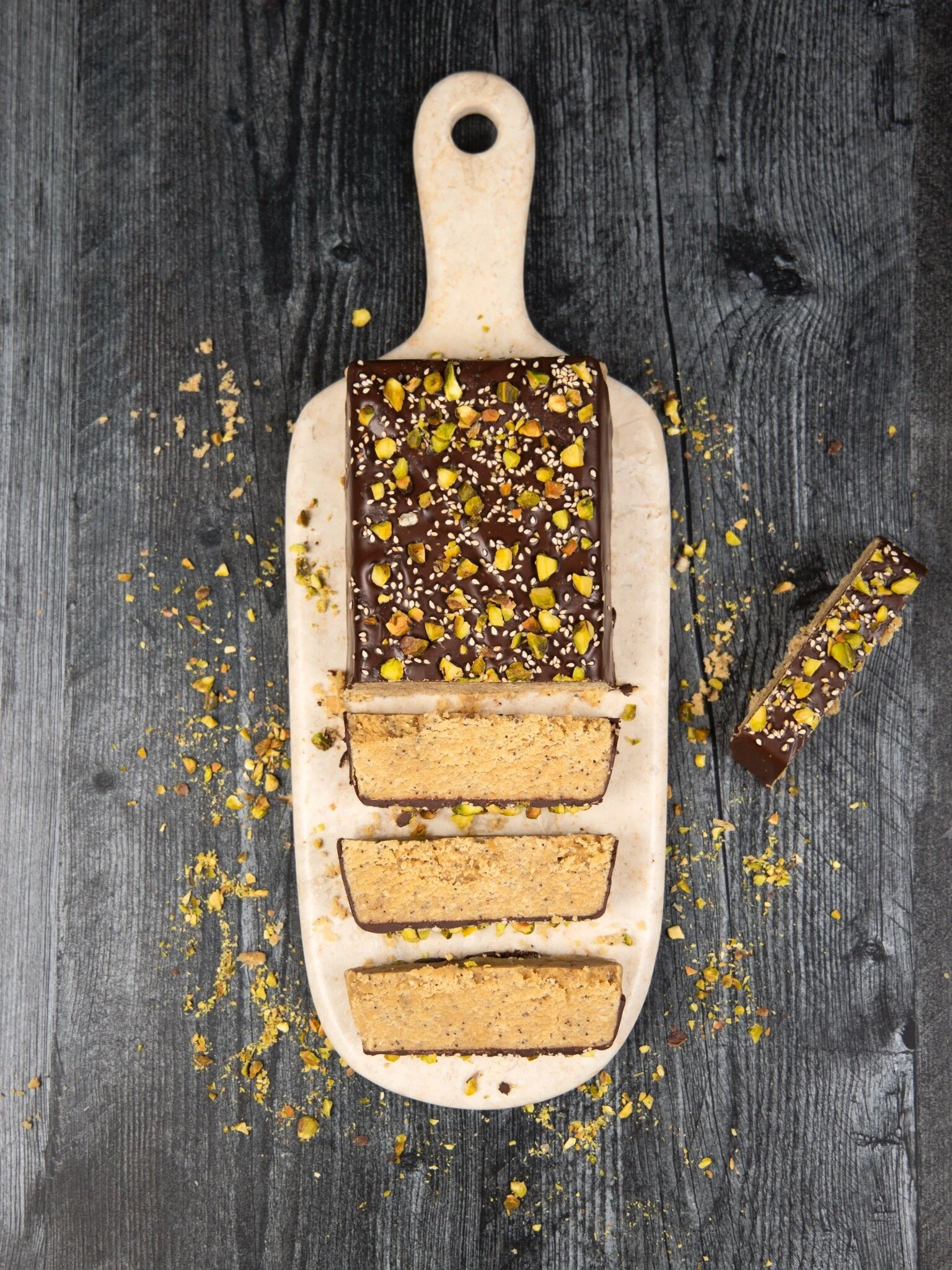Namoura
Following my Halva post, here’s another delicious treat from the Middle East. Namoura is a semolina cake sweetened with a floral syrup that’s poured over top after baking. A classic dessert from the region, it goes by different names in different countries: Namoura in Lebanon, Hareeseh / Harrisa in Syria and Palestine, and Basbousa in Egypt. The nuttiness of the semolina and hint of tang from whole milk yogurt balance out the sweet syrup, and make the cake rich in flavor and texture. I’ve also heard Namoura described as dense but I didn’t find it to be so with this recipe. I remember enjoying it when I was in Bethlehem a million years ago. These flavors bring back memories from that trip.
The cake's simple, rustic beauty from the traditional diamond pattern carved into the top, some decoratively placed almonds, and the lovely, natural yellow hue from the semolina. (Semolina flour comes from durum wheat and is the same flour that gives my Cranberry Chocolate Biscotti their lovely color.)
I think the flavor of the syrup is where you can really make this cake your own. I used pantry staples vanilla and lemon, but the recipe suggests lavender, rosewater, and I think orange blossom or orange zest would be really nice too. I plan to try rosewater next time - just placed an order for some!
Photo by Daniel Marks
Namoura recipe:
https://cooking.nytimes.com/recipes/1018776-namoura-syrup-soaked-semolina-cake
Difficulty:
Easy
Yield:
20-24 pieces (As written, I halved the recipe. See below.)
A few tips:
Halving the recipe
The recipe calls for a 9x13 pan and yields 20-24 pieces. That might be quite a lot if you’re social distancing at home like I am. I halved it and baked it in an 8 inch round pan and there is still plenty for the two of us. I reduced the bake time to 18 minutes to account for the lesser quantity, but otherwise I followed the recipe as written.
Do (a little) ahead
The syrup should be close to room temperature when you pour it over the hot, just-out-of-the-oven cake, so I suggest making it 20-30 minutes before you start making the batter for the cake. It takes a while to cool down and the batter comes together very quickly.
Smoothing out the batter
I found it useful to put a piece of plastic wrap on top of the dough when pressing it into the pan. This helped me get a smooth top without coating my hands in batter. I then used a small offset spatula for the final smoothing.
Enjoy!
Photo by Daniel Marks









